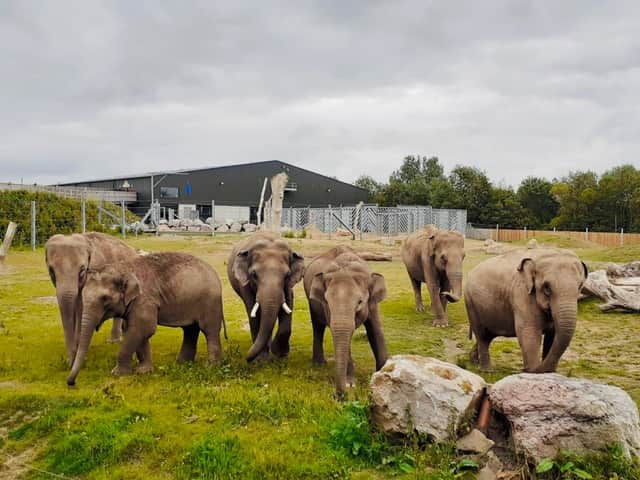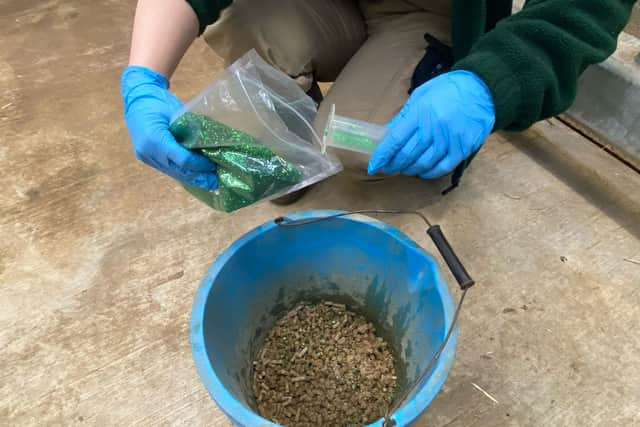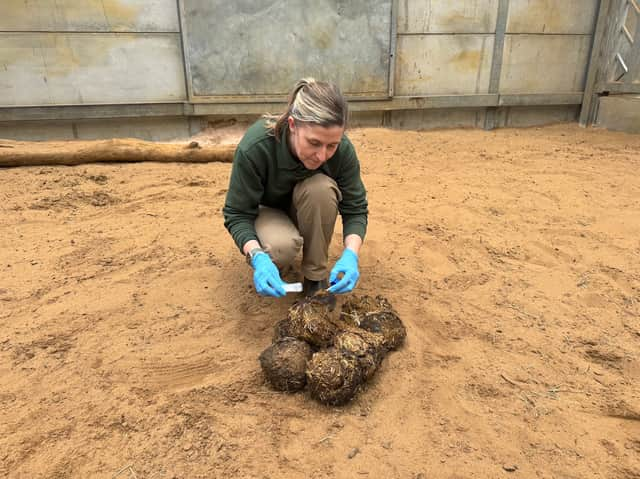Blackpool Zoo using glitter in pregnancy tests for elephants
and live on Freeview channel 276
Blackpool Zoo has come up with a novel way of discovering whether its elephants are pregnant - using glitter!
The zoo is monitoring the reproductive cycles of its female Asian elephants by using coloured edible glitter, which helps to identify the dung.
Advertisement
Hide AdAdvertisement
Hide AdFollowing recommendations from the European Endangered Species Programme for elephants Tara, Noorjahan and Esha, staff needed a way to successfully identify individual dung samples so they could be sent for hormone analysis.


How is the glitter used?
Each individual elephant is given food containing a different colour of edible glitter, which appears in their faeces so keepers can see which dung belongs to whom.
Samples are collected twice a week and sent to a cutting-edge research laboratory at Chester Zoo for analysis.
The results enable the keeper team to track the females’ reproductive cycles, which occur every 13-16 weeks, and can also determine whether or not they are pregnant.
Advertisement
Hide AdAdvertisement
Hide AdResults of the latest samples are expected in the coming weeks and Adam Kenyon, Section Head at Blackpool Zoo, is excited to see the findings.


He said: “Project Elephant Base Camp was our largest ever investment and from the earliest stages of planning our aim was to develop a programme for the successful care and management of a multi-generational elephant herd.
“The facility combines the UK’s largest indoor elephant house with several outdoor habitats, all of which were meticulously designed to support the complicated needs of Asian elephants.
“Our resident female, Kate, was the first to move into the facility in 2017, followed by Minbu, Noorjahan, Tara and Esha in 2018 and the herd was complete when we welcomed our first ever male elephant, Emmett, in late 2019.
Advertisement
Hide AdAdvertisement
Hide Ad“In 2020 we announced the successful integration of all six of our elephants and we have been continually monitoring their social development. With the help of science, we now hope this will lead to breeding success.
"We have used edible glitter to track hormone levels of many of our animals, so it is a tried and tested method for these types of investigations.
“The team at Chester Zoo have been working hard to analyse the samples through a science called faecal endocrinology and we are hoping to get the findings soon.
“This highly intelligent and complex species is endangered in the wild and by collaborating, sharing research, and exchanging ideas, zoos play a crucial role in the global effort to protect and conserve these majestic animals.”


Advertisement
Hide AdAdvertisement
Hide AdBlackpool Zoo said Project Elephant underpins its ongoing commitment to the endangered Asian Elephant - the largest land mammal on the Asian continent.
The species has been listed as Endangered on the IUCN (International Union for Conservation of Nature) Red List since 1986.
The population has declined by at least 50 percent over the last three generations, estimated to be 60–75 years, with threats including loss of habitat, habitat degradation, fragmentation and poaching.
Comment Guidelines
National World encourages reader discussion on our stories. User feedback, insights and back-and-forth exchanges add a rich layer of context to reporting. Please review our Community Guidelines before commenting.